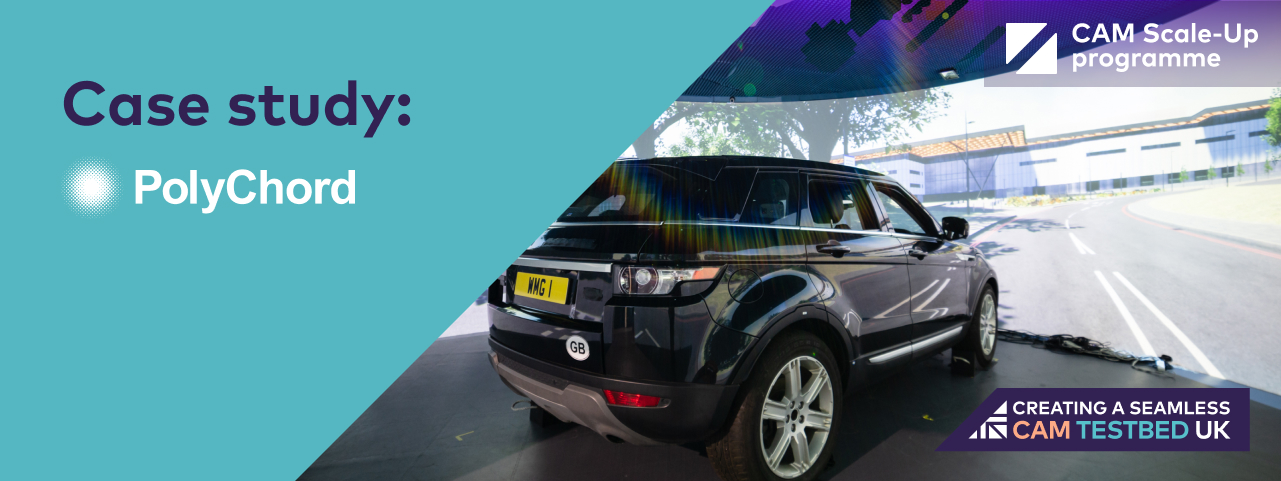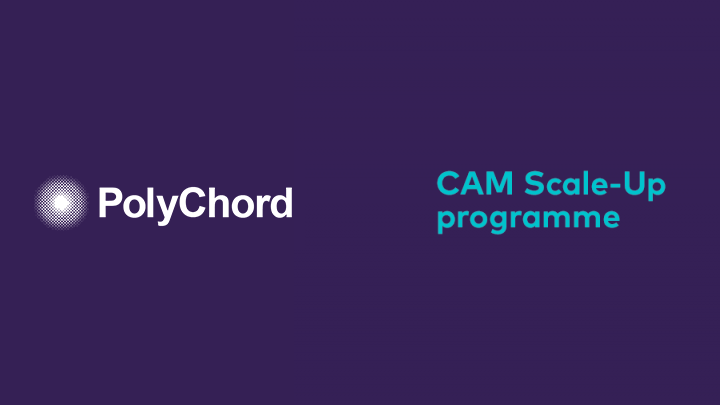



PolyChord and the Zenzic CAM Scale-Up programme
Using unique data-analysis technology to design robust, efficient and green communications networks for Connected and Automated Vehicles

PolyChord has created a mathematical framework that uses advanced data analysis to deliver the optimal placement of sensor, transmitter & receiver technology. It computes cost-efficient and robust performance, enabling exceptional and safe networks in any environment.
PolyChord is a start-up that specialises in applying maths to problem-solving. Founded in 2017, PolyChord is spearheaded by a highly-skilled team of astrophysicists from The University of Cambridge. They developed an algorithm that was used to examine the huge and complex dataset collected by the European Space Agency’s Planck satellite, however they realised there was a commercial use for their technology that could have real benefits on the ground.
After striking out on their own they developed their solution, MIDAS, with the UK’s Ministry of Defense. MIDAS uses Bayesian inference techniques to outline an optimised network of transmitters and receivers, maximising coverage, increasing robustness and therefore safety, all while reducing costs.
What makes PolyChord special?
The next-generation data science PolyChord employs removes the need for ‘best guesses’. Instead, MIDAS is mathematically rigorous, providing multiple ‘good’ transmitter-position configurations for a given space rather than just a single option. It isn’t limited in dimensionality in the same way other methods are, and it can naturally optimise for several different requirements. It takes into account potential hardware failure as well as complex constraints, such as building restrictions. The result is transmitter placement that guarantees consistent coverage in a given space while using minimal resources.
Mike Handley, CEO of Polychord elaborates:
PolyChord’s technology is a truly unique form of data-science that can be used to interrogate real-world problems. First and foremost, it’s incredibly flexible. We can not only help to provide solutions to issues concerning infrastructure and offer efficient problem-solving for telecoms companies, we also have the capacity to achieve outstanding green objectives. This means we have the ability to provide safer solutions that reduce both cost and energy.”
PolyChord testing journey
Rigorous testing of their algorithm in both simulated and real-world environments with CAM Testbed UK

PolyChord tested MIDAS for connected-car networks at Warwick Manufacturing Group (WMG) and Smart Mobility Living Labs: London (SMLL). At WMG, they used connected vehicles in their simulated environment in order to test the network strength of a MIDAS optimised network. The key aim was to explore various configurations to prove that MIDAS is a robust solution for providing maximum coverage from minimal equipment.
Their next step was to utilise the facilities at SMLL to validate MIDAS in a real-world setting where capabilities for providing robust V2X connectivity could be examined thoroughly.
Mike Handley explains: “We know that good connectivity is crucial for the clean operation of connected vehicles, particularly when dealing with busy junctions or in areas where connectivity is a challenge. This is why testing MIDAS in the CAM environment is important. The CAM Scale-Up programme gives us the opportunity to stress test our technology in real-world environments and offer a use case that will benefit greatly from what MIDAS has to offer. It’s all about using the minimum equipment to achieve excellent and robust coverage.”
What would success look like?
Looking beyond their participation in Zenzic’s CAM Scale-Up programme, PolyChord would like to partner with telecoms companies to optimise the placement of transmitters across their networks. They believe that MIDAS can offer huge benefits, both in cost savings as well as helping companies move towards net zero, by minimising the number of large transmitters and power needed (while ensuring consistent coverage). PolyChord have also been approached by automotive companies as the same technique can optimise sensor placement on vehicles.
Programme results
PolyChord’s testing programme has resulted in business success across three core aspects.Development
Taking part in the CAM Scale-Up programme enabled PolyChord to verify and validate their solution, MIDAS, and boost the product further.
Sustainability
By working with SMLL, PolyChord was able to examine and optimise the power consumption of signal transmitters.
Feedback
Meeting the potential end-users of PolyChord’s technology ensured they are developing their product in a way that’s useful for the end user.
More SME case studies

Connected Collision Management Platform empowering Automotive organisations to deliver transformational customer and claims experiences

Calyo is developing the next-generation AI-enabled perception system that offers an unprecedented combination of high performance, flexibility and low cost for smart mobile robots and autonomous vehicles.

High density urban passenger & freight transport at half the cost/space/time and highest passenger convenience

Eloy is a connected and autonomous vehicle software business focused on multi-vehicle coordination. Our software includes patent pending methods for orchestrating how human-driven and autonomous vehicles travel.

Leading the way in road scape and highways information.

Breakthrough Radar Vision for Autonomy
Find out more about the
CAM Scale-Up programme
discover more

Talk to us
Want to talk about connected and automated mobility in the UK and see how Zenzic can help you?
{{ teamMember.name }}
{{ teamMember.title }}
